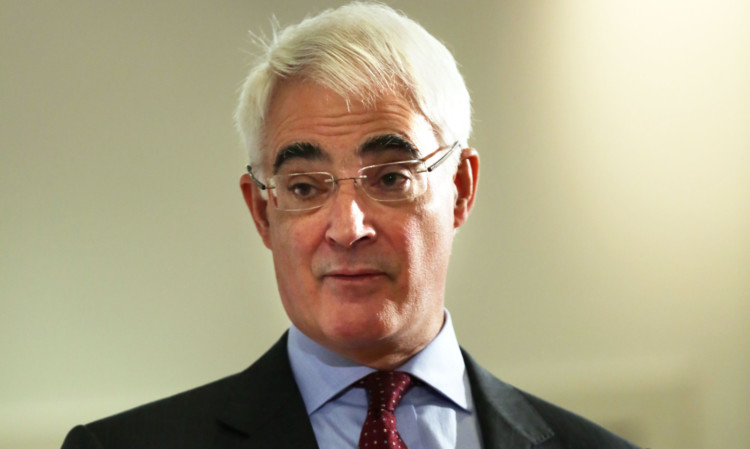
Alistair Darling has slammed SNP plans to set up an oil fund in the early days of an independent Scotland, claiming it would have to be paid for by borrowing cash.
The former Chancellor has hit out as the Scottish Government is this week expected to announce plans to set up an oil fund from North Sea tax revenues as early as 2016 if there is a Yes vote.
Alex Salmond is expected to unveil forecasts which show that under any scenario an independent Scotland would start life with strong public finances.
The announcement will come on the same day the UK Government will publish a figure on the “Union dividend” expected to run into several thousands of pounds which they claim is the financial benefit to Scots of being part of the UK.
The leader of the Better Together campaign Mr Darling pointed to Scottish Government documents from last year which show that, in the short-term, an oil fund could only be established if there was a rise in taxes, cut in public spending or increased borrowing.
He said: “Their own figures show that in order to set up a fund, because you are spending more at the moment than you’re getting in, you’d have to borrow that money.
“It makes no sense, you are not actually establishing an oil fund, you are establishing a borrowing fund, and that money would have to come out of services elsewhere.”
Chief Secretary to the Treasury Danny Alexander added: “You’d be borrowing at a more expensive rate than you would be earning on your fund, it is a bit like taking money off your credit card to put in your savings account.“
The Scottish Government yesterday released details of a new Treasury estimate on the start-up costs for an independent Scotland
The UK Government analysis points to estimates that the average cost of setting up a Government department is £15 million.
Across 180 departments, which the Treasury claims SNP minsters have said they need, the cost runs into billions of pounds.
However, the Scottish Government last night said the claim was “misleading” and called on them to withdraw it, pointing out an independent Scotland would not be starting from scratch.
Finance Secretary John Swinney said: “This week we will publish figures showing the strength of Scotland’s public finances at the point of independence and the huge economic opportunity a vote for independence will open up.
“If we pursue the policies that only an independent Scotland will be able to pursue then we can deliver an oil fund from the point of independence and secure an economic bonus that can only be delivered by independence.
“The Norwegian Oil Fund began in the mid-1990s with modest payments and is now the world’s largest sovereign wealth fund, worth more than £500 billion while Scotland’s oil fund stands at zero, as a result of Westminster mismanagement of our resources.”

Enjoy the convenience of having The Sunday Post delivered as a digital ePaper straight to your smartphone, tablet or computer.
Subscribe for only £5.49 a month and enjoy all the benefits of the printed paper as a digital replica.
Subscribe